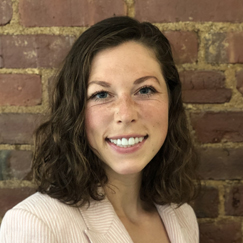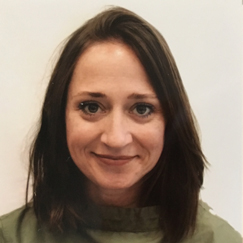- What We Do
- Agriculture and Food Security
- Democracy, Human Rights and Governance
- Economic Growth and Trade
- Education
- Environment and Global Climate Change
- Gender Equality and Women's Empowerment
- Global Health
- Humanitarian Assistance
- Transformation at USAID
- Water and Sanitation
- Working in Crises and Conflict
- U.S. Global Development Lab
Speeches Shim


Breanne Lesnar, MPH
Breanne is the Program Coordinator for Research Engagement at AVAC. She supports the work of the Coalition to Accelerate and Support Prevention Research (CASPR), an Africa-centered set of partnerships committed to advancing HIV prevention research and development.

Stacey Hannah, MHS
Stacey is the Director of Research Engagement at AVAC. With over 16 years of experience in HIV prevention, she oversees CASPR and manages AVAC’s Good Participatory Practices program.
Recent Blog Posts
- What does Self-Reliance look like on the way to an HIV Vaccine?
Thomas J. Hope, Ph.D. and Ann Marie Carias, Ph.D - May 16, 2019 - Paving the Way for African Scientists to Spearhead HIV Vaccine Development
Dr. Daniel Ochiel and Dr. Jill Gilmour - January 30, 2019
Every year our communities commemorate World AIDS Day (WAD) on December 1st, but this WAD carries special weight. The UNAIDS “90-90-90” targets to help end the epidemic expire in the new year, and it’s clear we’ll miss the mark. By 2020, UNAIDS predicted massive declines in HIV incidence, with a reduction of 75 percent from 2015. While treatment coverage has expanded rapidly, the recent universal test and treat trials showed that community-wide testing followed by ART for people living with HIV has health benefits for the individual and reduces incidence by around 30%. That's both invaluable and insufficient to end epidemic levels of new diagnoses. Moreover, the UNAIDS’ primary prevention targets won’t be met by a long shot.
This sobering reality has us at AVAC wondering: Now what? In the 2019 AVAC Report, we lay out three concrete actions needed in 2020 to get on the right track towards epidemic control.
First, we call for leadership that is bold, visible and activist, from the new head of UNAIDS, to African houses of parliament to civil society coalitions: take uncompromising stances, demand accountability, speak out for intersectional issues of race, gender, class and climate. This work needs to be funded, full-throttle and fearless.
The face of the HIV/AIDS epidemic might look different today than it did in the 1980’s, but it’s no less of an emergency. With AIDS deaths and infections rising in some key places and populations, a growing youth population and a shrinking funding envelope, now is the time to demand accountability. We call on leaders at all levels to fight for increased domestic financing for health and HIV; demand the end of criminalization and stigmatization based on gender and sexual identity; amplify the voices of women and girls; and address other global threats that intersect with the HIV/AIDS response, such as climate change and power imbalances.
Second, we advocate for the use of today’s most recent evidence to guide new prevention targets that will pave the way for epidemic control. In particular, now is the time to set clear milestones for the prevention research pipeline. Investments in research and development over the past decades have provided us with the treatment and prevention options we have today, and 2019 boasts more trials, trial participants and prevention strategies under investigation than ever before. The field needs targets for prevention research that people can understand and influence.
On the implementation side, new targets should draw on a universal prevention cascade model with “effective use” as the ultimate indicator of impact. With this model we’d be able to measure what matters: the number of people at risk of HIV; desire to use a prevention method; access to that method; and effective use. Paired with metrics that are clearly defined and feasible to track, effective targets allow the field to evaluate progress, course correct and make a strong case for sustained investment across the entire research to rollout continuum.
Third, we call for multilayered prevention approaches that are centered around the person, not the virus. Since last World AIDS Day, we’ve learned again, perhaps most strikingly from the ECHO trial, about the dynamic needs of women around both HIV and pregnancy prevention. The high rates of HIV incidence in that trial, along with the complexity of translating results into policy, bring renewed urgency to the need for comprehensive HIV prevention and reproductive health approaches. We propose a “3D” agenda [PDF, 39K] (Deliver, Demonstrate, Develop) for multilayered prevention—one that incorporates multipurpose strategies (i.e., products that prevent both pregnancy and HIV), and scaled delivery of biomedical tools embedded within structural approaches (i.e., policy reform, transforming community norms, facilitating educational empowerment).
At AVAC, we’re proud to work on the USAID-funded Coalition to Accelerate and Support Prevention Research (CASPR), which is building an Africa-led advocacy movement for the development of new prevention interventions as a key component of ending the epidemic. As a coalition that advocates for research, marking World AIDS Day every year only makes us more conscious of the number of years HIV prevention research—including for a vaccine—has labored on. This year, as we ask ourselves “now what?”, we know the answer: we need to improve, iterate and scale-up HIV prevention that’s smart, rights-based and community-owned to reach that year when on the 1st of December we remember a disease that was.
AVAC works to accelerate the ethical development and global delivery of HIV prevention options as part of a comprehensive and integrated response to the epidemic.

Comment
Make a general inquiry or suggest an improvement.